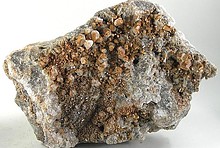Home PageAbout MindatThe Mindat ManualHistory of MindatCopyright StatusWho We AreContact UsAdvertise on Mindat
Donate to MindatCorporate SponsorshipSponsor a PageSponsored PagesMindat AdvertisersAdvertise on Mindat
Learning CenterWhat is a mineral?The most common minerals on earthInformation for EducatorsMindat ArticlesThe ElementsThe Rock H. Currier Digital LibraryGeologic Time
Minerals by PropertiesMinerals by ChemistryAdvanced Locality SearchRandom MineralRandom LocalitySearch by minIDLocalities Near MeSearch ArticlesSearch GlossaryMore Search Options
The Mindat ManualAdd a New PhotoRate PhotosLocality Edit ReportCoordinate Completion ReportAdd Glossary Item
Mining CompaniesStatisticsUsersMineral MuseumsClubs & OrganizationsMineral Shows & EventsThe Mindat DirectoryDevice SettingsThe Mineral Quiz
Photo SearchPhoto GalleriesSearch by ColorNew Photos TodayNew Photos YesterdayMembers' Photo GalleriesPast Photo of the Day GalleryPhotography
╳Discussions
💬 Home🔎 Search📅 LatestGroups
EducationOpen discussion area.Fakes & FraudsOpen discussion area.Field CollectingOpen discussion area.FossilsOpen discussion area.Gems and GemologyOpen discussion area.GeneralOpen discussion area.How to ContributeOpen discussion area.Identity HelpOpen discussion area.Improving Mindat.orgOpen discussion area.LocalitiesOpen discussion area.Lost and Stolen SpecimensOpen discussion area.MarketplaceOpen discussion area.MeteoritesOpen discussion area.Mindat ProductsOpen discussion area.Mineral ExchangesOpen discussion area.Mineral PhotographyOpen discussion area.Mineral ShowsOpen discussion area.Mineralogical ClassificationOpen discussion area.Mineralogy CourseOpen discussion area.MineralsOpen discussion area.Minerals and MuseumsOpen discussion area.PhotosOpen discussion area.Techniques for CollectorsOpen discussion area.The Rock H. Currier Digital LibraryOpen discussion area.UV MineralsOpen discussion area.Recent Images in Discussions
Mineralogical ClassificationPalladosilicide IMA 2014-080 published

26th May 2015 10:55 UTCChris Stanley Expert
Palladosilicide, Pd2Si, is a new mineral (IMA 2014-080) discovered in chromite-rich samples from the
Kapalagulu intrusion, western Tanzania (30º03’51’’E 5º53’16’’S and 30º05’37’’E 5º54’26’’S) and from the
UG-2 chromitite, Bushveld complex, South Africa. A total of 13 grains of palladosilicide, ranging in size
from 0.7 to 39.1 mm (equivalent circle diameters), were found. Synthetic Pd2Si is hexagonal, space group
P6¯2m, with a = 6.496(5), c = 3.433(4) A ˚ , V = 125.5(1) A ˚ 3, c:a = 0.529 with Z = 3. The strongest lines
calculated from the powder pattern (Anderko and Schubert, 1953) are [d in A ˚ (I) (hkl)] 2.3658 100 (111);
2.1263 37 (120); 2.1808 34 (021); 3.240 20 (110); 1.8752 19 (030); 1.7265 12 (002); 1.3403 11 (122);
1.2089 10 (231). The calculated density for three analyses varies from 9.562 to 9.753 g cm3.
Palladosilicide is considered to be equivalent to synthetic Pd2Si based on results from electron
backscattered diffraction analyses. Reflectance data in air for the four Commission on Ore Mineralogy
wavelengths are [l nm, R1 (%) R2 (%)] 470 49.6 52.7; 546 51.2 53.8; 589 51.6 53.7; 650 51.7 53.3 and the
mineral is bright creamy white against chromite, weakly bireflectant and displays no discernible
pleochroism or twinning. It is weakly anisotropic, has weak extinction and rotation tints in shades of blue
and olive green. Electron probe microanalyses of palladosilicide yield a simplified formula of Pd2Si.

20th Jun 2015 08:50 UTCKnut Edvard Larsen 🌟 Manager
Mineralpage in process to be updated.




Mindat.org is an outreach project of the Hudson Institute of Mineralogy, a 501(c)(3) not-for-profit organization.
Copyright © mindat.org and the Hudson Institute of Mineralogy 1993-2024, except where stated. Most political location boundaries are © OpenStreetMap contributors. Mindat.org relies on the contributions of thousands of members and supporters. Founded in 2000 by Jolyon Ralph.
Privacy Policy - Terms & Conditions - Contact Us / DMCA issues - Report a bug/vulnerability Current server date and time: April 16, 2024 19:34:18
Copyright © mindat.org and the Hudson Institute of Mineralogy 1993-2024, except where stated. Most political location boundaries are © OpenStreetMap contributors. Mindat.org relies on the contributions of thousands of members and supporters. Founded in 2000 by Jolyon Ralph.
Privacy Policy - Terms & Conditions - Contact Us / DMCA issues - Report a bug/vulnerability Current server date and time: April 16, 2024 19:34:18










